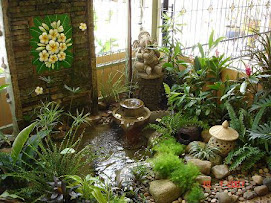Spring Color In The Landscape
Most people enjoy color in the landscape, but especially in the Spring after the Winter season.
In the early Spring, one can enjoy blooming bulbs, which should be planted the previous Fall. Some bulbs to plant might be Daffodils, Tulips, Grape Hyacinth and Hyacinth. There are others, but these are some of the more spectacular ones. I like to plant ALOT of one kind together to create an eye-catching splash of color.
Daffodils come in various colors, but mainly yellows, oranges and whites. They can also be single, double, or even ruffled. Daffodils can naturalize, which means they multiply as years go by. They are also deer resistant.
Tulips also come in many colors, more so than Daffodils. You can choose shades of pink, purple, white, and yellow. These are the most common colors. The flowers themselves can be on the small side or very large, and they can also be ruffled. Deer love tulips, so be careful where you plant them if you have a deer problem.
I love Grape Hyacinths. They are very small and come in purple and white. Due to their size, an abundance of them should be planted together in groups to make a statement and have them stand out.
Hyacinths are a larger from of the Grape Hyacinth and also come in various colors. They are shorter and wider, rather than the tall and slender forms of the Daffodils and Tulips.
Early flowering trees are always a welcoming sight in the spring. Some of these are Cherry trees, Dogwoods, Crabapples, Magnolias, and Flowering Plum. Certain varieties of trees are hardier than others. For example, Dogwoods have been plagued with Anthracnose. Crosses have been developed between the problematic native Flowering Dogwood and the Kousa Dogwood to create hybrids that are resistant to Anthracnose. One of the successful ones is the Stellar Pink Dogwood. As its name implies, the flowers are a beautiful pink.
There are a multitude of flowering shrubs to choose from that will provide color in the spring. Some that you might consider are Rhododendron, Azaleas, and Viburnum. Most of theses varieties do well located in an area that gets both sun and shade. Rhododendron are large leaved shrubs and graceful. Most are on the larger size, but not all. A smaller Rhododendron variety is "Janet Blair" and has very pretty clear pink flowers. Rhodendron flowers can also be other shades of pink, purples, reds and white. The deer do like to eat this plant. However, the native Rhododendron is somewhat deer resistant. Azaleas come in many colors. You can find them in white, pinks, purples, and reds. The Exbury Azalea, which is larger and deciduous, comes in much brighter colors. So if you like bright yellows and oranges, you might try one of these. Viburnum flowers are mostly white. The majority of these plants get large and they are mostly deer resistant. They look nice in a relatively shady location and also work well in natural or wooded areas. Japanese Andromeda and Mountain Laurel are also lovely, early flowering shrubs. There are many varieties of these so you may select for particular colors and also shrub size. As you drive or walk around in the spring, you might see masses of Mountain Laurel blooming in the woods or at the edges.
Spring blooming perennials can be found in numerous sizes, shapes and flower colors. Bleeding Heart 'Exima' or 'Luxuriant' will bloom on and off for a good part of the season. Pink is the most common although they are also available in white. They like the shade. Peonies are a lovely old-fashioned perennial with their large beautiful flowers. They resemble a medium sized shrub (although they are a perennial) so can be used where you need some substance. Veronica with its spike-like blooms is very colorful. This is a lower perennial that prefers a sunny condition. Another great perennial is Catmint 'Walker's Low'. I have this in my garden. Mine is now two years old. It is about three feet wide and about 18' - 24" high. It blooms for an extremely long time with purple elongated flowers. Here is a tip for this plant. When flowers are finishing, cut the plant and flowers back by about 12". It will re-bloom again and be just as pretty.
Try to plant in large groups to maximize the impact of the color. One Daffodil looks lonely, but 100 make a striking picture. The same holds true for shrubs and perennials; you should plant them in groups. I like to use a minimum of five of a particular plant all in the same color. Trees can be used alone, but even with this type of plant you can add a few of one kind. A group of three Dogwood in bloom provides a mass of color.
Think in color schemes for plants that bloom at the same time. One palette might be various shades of pink, while another could be pinks, purples and whites. Want more of a cottage garden look? Add some pale yellows to create a soft kaleidoscope of color.
Select plants that bloom in different Spring months, from March through May. Then you are onto Summer color!
About the author:
Susan Schlenger is a Landscape Designer with a degree in Landscape Architecture. She has been providing design services for 10 years and has worked in various parts of the United States. Her company, Susan Schlenger Landscape Design, is based in Virginia.
To learn more about landscape design ideas and see some of her projects, visit http://www.landscape-design-advice.com
Article Source: http://www.Free-Articles-Zone.com



No comments:
Post a Comment